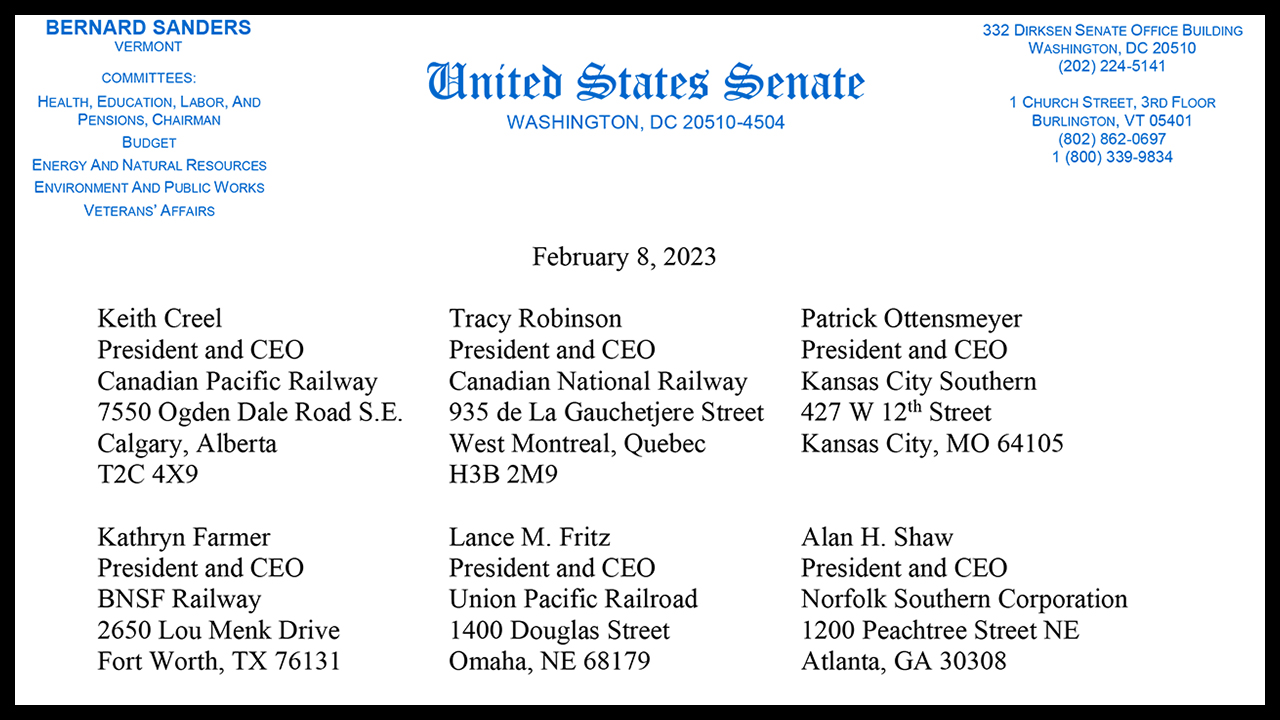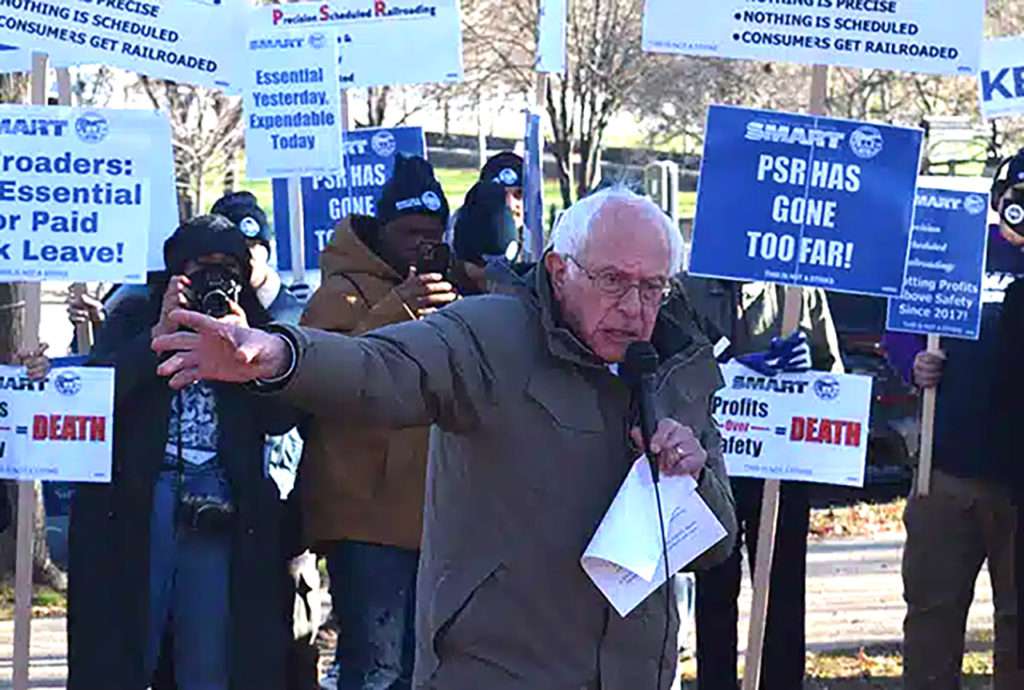
Sanders to Class I’s (Except CSX): Paid Sick Leave For All
Written by William C. Vantuono, Editor-in-Chief
Following CSX’s deal with two of its labor unions to enact paid sick leave, Sen. Bernie Sanders (I-Vt.) on Feb. 8 sent a letter to the CEOs of BNSF, Canadian Pacific, CN, Kansas City Southern, Norfolk Southern and Union Pacific urging that they all take CSX’s lead and enact similar provisions. He added that he would be holding a hearing on the matter “in the near future” and is hosting a Feb. 9 rally described as a “press conference” with rail labor leaders in Washington, D.C.
“As you know, a few months ago, a majority in the United States Senate and the House of Representatives voted for legislation to guarantee seven paid sick days to every rail worker in America,” Sanders, the erstwhile populist Presidential candidate well known for his signature positions on free health care and college educations “for all,” wrote. “While this legislation was filibustered in the Senate by a minority of Senators, this issue has not been forgotten by Members of Congress or the committee of jurisdiction over this matter—the Health, Education, Labor, and Pensions (HELP) Committee.”
Lacing his letter with heavy criticism of “exorbitant” Class executive compensation, “record-breaking profits,” PSR (Precision Scheduled Railroading) “pushed by … hedge fund investors on Wall Street,” stock buybacks, “huge dividends to wealthy shareholders” and worker headcount reductions (the letter is downloadable as a PDF, below), Sanders claimed that “guaranteeing seven paid sick days to rail workers would cost your industry just $321 million dollars—less than 1.2% of industry-wide profits in a single year … The nearly 120,000 railroad workers employed by your companies are vital to the well-being of our country. They make sure that our seniors get life-saving medications, our families get fuel to heat their homes in the winter, and our children have food on the table at dinnertime.”
Sanders—who, like many politicians has been criticized as putting theatrics over substance—added that “workers are forced to make tragic and even life-threatening choices. These choices put not only themselves and their families at risk, but also endanger millions of American consumers and drivers who interact with our vital freight rail system every day. In other words, your policies are endangering the safety of the American people. I have heard terrible and heartbreaking stories from rail workers who have been penalized for spending the day in the hospital with their sick children. A locomotive engineer, who, out of fear of being fired, was forced to skip his doctor’s appointment after experiencing unusual symptoms, suffered a heart attack and died in a [locomotive cab] just weeks later. No worker should have to choose between their life, the health of their families or their paycheck.”

Sanders’ letter is directly tied to what is described as a “press conference” he will co-host with U.S. Sen. Mike Braun (R-Ind.) at 1:30 p.m. on Feb. 9. They will be joined by SMART Transportation Division leadership as well as officers from the Brotherhood of Locomotive Engineers and Trainmen, the Brotherhood of Railroad Signalmen, the Brotherhood of Maintenance of Way Employes Division and the AFL-CIO Transportation Trades Department “to demand companies provide rail workers with at least seven paid sick days.”
A senior operating union officer who requested anonymity spoke with Railway Age, saying that granting sick leave is not enough to solve the train and engine service worker shortage. “Carriers must enter the 21st century and recognize that qualified new hires are not going to accept the availability policies of the Class I railroads,” he said. “They point out that they have hundreds of applicants for each job opening. But all applicants are solicited via the Internet. That means anyone with a computer can apply. Most applicants are not serious or qualified. The carrier will hire 35 to 40 applicants for a training class. Fewer than 7 or 8 will complete the training and make it through the probation period. At the end of one year, only 3 or 4 remain. The continued operating craft shortage is indicative of the high turnover problem.”



